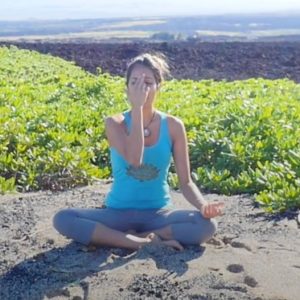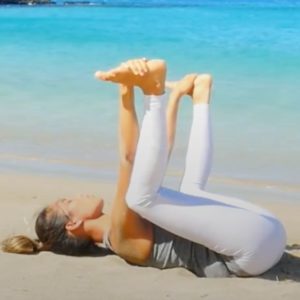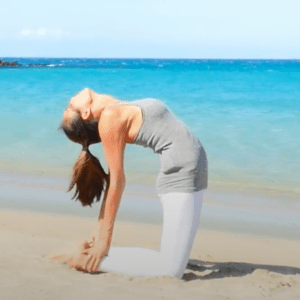Today’s Poses – Boat Pose and Bridge Pose
Boat Pose and Bridge Pose
Boat Pose
The Boat Pose builds core strength as well as relieving tension and lethargy. The core strength in the body can protect the lower back, but also refers us to our inner core. The inner core of the being takes us to the true journey of yoga, the exploration of our inner nature. So jump into the boat pose, and discover something about what yoga can truly reveal.
Steps
- Sit with the spine straight. The legs are together stretched out in front, the palms are on the floor by the hips, fingers pointing to the feet.
- Exhale, slightly lean the torso back. Simultaneously lift the legs.
- Keep the legs close together and straight, at an angle of 60 to 65 degrees to the floor with toes pointing forwards. The feet are higher than the head.
- Balance is maintained only on the buttocks.
- The arms are stretched forward parallel to the floor with the palms facing each other.
- Exhale, lower the hands, and rest the legs on the floor. Relax by laying back on the ground.
Benefits
- Strengthens the abdomen, hip flexors, and spine.
- Stimulates the kidneys, thyroid and prostate glands, and intestines.
- Restores freshness.
- Removes lethargy.
- It eliminates nervous tension and brings about deep relaxation.
- It helps relieve stress.
Bridge Pose
This asana’s name is a very accurate description of the posture: Setu translates to “bridge”, and bandha to “joining”. Partial inversion and partial backbend, Setubandhasana is a unique combination of two of the main asana categories. As simple as this pose may seem, it requires very specific pelvis alignment and sufficient core engagement for safe back bending and constitutes excellent foundation work for inversions such as Shoulder Stand and Plow Pose. The pose stretches the chest, neck, and spine as well as the reproductive and digestive organs. It calms the mind and boosts mood, helping with anxiety, fatigue, and depression.
Steps
- Lie in a supine position on the ground, making sure that the head is in line with the spine. Bend the knees, and place the feet at a distance to the buttocks, keeping them parallel and hip-distance apart.
- The arms are alongside the torso. The shoulders are rolled backward to bring them close to each other.
- Peel the spine off the floor vertebrae by vertebrae while keeping the head and the top of the shoulders on the ground. Raise the chest and navel as high as possible, and push the chest towards the chin by pressing firmly into the legs. Keep the feet and shoulders in the same position. The soles of the feet remain flat on the floor.
- The hands may be interlocked, or the palms may face the ground. Very flexible students can aim to hold their ankles with their hands. In any case, the lower legs have to be kept perpendicular to the ground, avoiding strain on the knees.
- In the final position, the body is supported by the head, neck, shoulders, arms, and feet.
Benefits
- Stretches the chest, neck, and spine.
- Stimulates lungs and thyroid.
- Stretches the colon and abdominal organs.
- Tones the female reproductive organs.
- It calms the brain and helps alleviate stress and mild depression.
- Reduces anxiety, fatigue, and insomnia.




